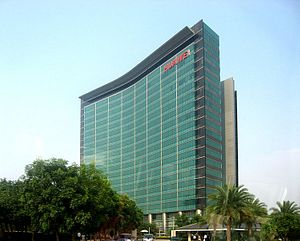The charges against Huawei, hinted at by the December 2018 arrest of Meng Wanzhou, its CFO and the daughter of founder Ren Zhengfei, have now been filed in U.S. federal courts. And they are severe.
Bank fraud. Wire fraud. Theft of intellectual property. Violation of sanctions against Iran.
If true, the charges are indicative of a larger, more structural issue common throughout the Chinese business world, and particularly prevalent in the 1990s. In order to understand Huawei, one has to understand its hometown of Shenzhen.
In the 1990s, China’s Special Economic Zones (SEZs) soaked up foreign investment by the billions from all corners of the earth. The Chinese government subsidized that investment from abroad with land deals, tax breaks, and no-questions-asked bank loans.
Shenzhen, the birthplace and proving ground of Huawei, was the first and became the mother of all SEZs. The business behavior and practices of Huawei’s key players and of Huawei at large were forged in this wild, deeply corrupt, frontier fishing village that became a metropolis nearly overnight.
If the charges against Huawei and its CFO, Meng Wanzhou, are proven true, the case will have been an indictment on the system that forged Huawei, as much as on the company itself. This is one reason why the Chinese government acted so vociferously in the early days of Meng’s detention.
As a consequence of the environment in which early start-ups were allowed to grow and prosper in Shenzhen and other SEZs, such Chinese companies are unprepared for, unaccustomed to, and unfamiliar with an international business environment framed by and answerable to the rule of law.
In Shenzhen, it was not law to which companies such as Huawei had to answer. It was power brokers in key government and Party positions operating in concert with criminal elements who joined together to give companies the right, the resources, and the room to operate.
Companies in those days had little to worry about except pleasing and currying favor with Chinese Communist Party bosses and their hangers-on, who have make-or-break power over the fortunes of any company. Scant thought was given to the legality of it all. Companies that succeeded under this patronage system did not work outside of the system; on the contrary, they very much worked in accordance with its protocols.
The problems began when it became clear that the system of the Chinese SEZ, and that which is considered to comprise international norms, have little in common. Thus the charges against Huawei call into question the entire mechanism by which China has modernized to date.
Shenzhen was an experiment of grand proportions in economic policy. Its story is probably best told in He Qinglian’s bestseller, The Pitfalls of Modernization. Amazingly, the book was originally allowed to be published in China, despite its deep criticisms of policies and practices in Shenzhen during the 1990s.
In a word, He, who went to Shenzhen as a journalist and newspaper editor, describes a mafia.
The Shenzhen of the 1990s, where Meng’s father established himself after ostensibly leaving the military, and where Meng herself cut her career teeth, was a ribald frontier, both figuratively and literally. To understand Ren Zhengfei’s and his daughter’s position there at that time, one must take into account that their very presence in Shenzhen was already something out of the ordinary.
Ordinary Chinese could not get into Shenzhen. Visiting, much less setting up shop or living in Shenzhen, required special permits. Those special permits were issued to the well-connected, and to those who paid through back-channels.
Shenzhen was off-limits to most Chinese, except for those who got in by becoming contract laborers. For an ordinary Chinese worker, the contract was the first step into a world of blatantly disregarded labor, living, and health and safety regulations.
Contracts that designated a 44-hour working week in fact disguised forced overtime of up to another 50 hours per week per worker. Workers who fought the system were summarily dismissed, with functionally no recourse.
Shenzhen and its environs became the embodiment of the sweatshop in China. Living conditions saw 12 to 16 people per factory dormitory room, with a toilet for every 100. Working 12 to 14 hours a day, seven days a week, and living in a close, often highly unsanitary environment, health issues invariably multiplied. Yet factory-provided healthcare was basic, or nonexistent.
In other ways, and much like most frontier towns anyplace in the world, lawlessness and vice dominated the social scene in Shenzhen. Prostitution, often run by military and paramilitary elements, was rampant. Women who could bribe their way into Shenzhen, and who had the will to do it, could make small fortunes in the Shenzhen sex trade, and then meld back into their former lives at home with enough capital to start a business.
Shenzhen was supposed to be a poster child of relative openness to the outside world, allowing market mechanisms to flourish in a quasi-capitalist space. Instead, closer inspection shows that the city became a toolbox for the crony politics of the CCP.
As He Qinglian argues, “[A]s the power of local governments grows, officials who have favored reform would come to oppose further reform because it would limit their ability to trade power for money and money for power.”
This is the world in which – and for which — Huawei was built. It remains to be seen how far the apple has fallen from the tree.
































